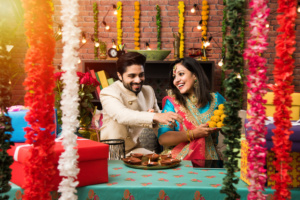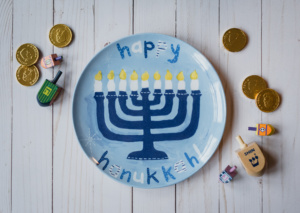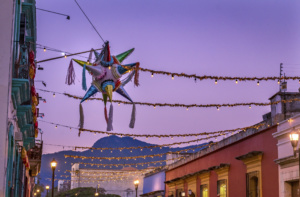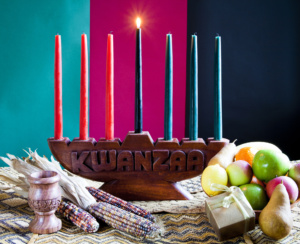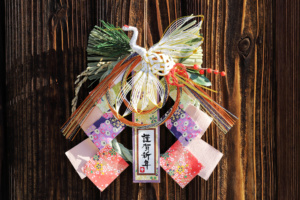Worldwide Celebrations:
Here Is A Quick Background On Six Holidays Around
The Globe And How You Can Decorate For Each
Article By | Jaraya Johnson, CTW Features
Every year, millions of families all over the world celebrate the end of the year in some way. Even though Christmas is one of the top celebrated holidays in the country, other countries and families decide to celebrate in their own way. Take a look at these six holidays that are celebrated worldwide.
Diwali (Nov. 12-16)
Diwali, also called Deepavali or Divali, is a five-day Hindu festival of lights that celebrates new beginnings, good over evil and light beating darkness. Diwali is celebrated by millions every year. This holiday occurs in either October or November each year and does not have a set date because it is determined by the position of the moon.
Though the festival is five days long, the main event occurs on the third day, known as Amavasya, new moon day. This year, that will be on November 14.
According to Hinduism Today, when decorating for Diwali, families light up households and streets with oil-wick lamps and string lights, and they dress in new color-popping clothing and jewelry.
Hanukkah (Dec. 10-18)
Hanukkah, or Chanukah, is an eight-day Jewish celebration to commemorate Maccabees revolting against Greek and Syrian soldiers who threatened their way of life, according to History.com. After the revolt, Judah Maccabee, the leader of the “Maccabees,” instructed his followers to begin rebuilding and light the seven-branch Menorah of the Second Temple. The Menorah was lit using a small amount of oil thought to only burn for one day, but it burned for eight days and eight nights, according to the site. In this, Nes Gadol Haya Sham, a great miracle happened there.
Decorations for Hanukkah include:
The Star of David: this could be candle holders, Star of David stars hanging around the house or ornaments. According to My Jewish Learning, a website meant to educate readers, the six points of the Star of David represent “six male sefirot (attributes of God), in union with the seventh sefirah of the female (the center of the shape).”
Dreidel: these are spinning tops with four sides, and they can be played with during the celebration, or they can be used in décor as lights to hang and can be incorporated into the holiday in many ways. Each side of the dreidel represents something different and presents a letter of the Hebrew alphabet. When using the dreidel for games, on each side, a letter stands for nun, gimel, hei and shin. According to My Jewish Learning, the sides represent the phrase “Nes Gadol Haya Sham”.
Hanukkiyah or Menorah: the Hanukkah Menorah has nine branches and can also be referred to as a Hanukkiyah, according to History.com. The branch raised above the others holds the Shamash candle, which is the candle used to light the others. Each night, a new candle is lit. According to Reform Judaism, a website educating on Jewish history and practices, the candles are lit from left to right “so that the kindling begins with the newest light”.
Las Posadas (Dec. 16–24)
This celebration is a religious nine-day festival to reenact Joseph and Mary’s journey to Bethlehem so Mary could safely give birth to Jesus. The festival originated in Spain and is now celebrated in Mexico as well. For eight nights of Las Posadas, families, friends and neighbors participate in dressing as angels and shepherds walking the streets with two people dressed as Mary and Joseph.
The group sings songs and search for a house, a place for Mary to give birth. The house they choose is not a random house but a house that is designated for that night, and each night they go to a different home.
While walking, the group stops at multiple houses only to get turned away. Finally, they reach the designated home, and they’re allowed inside for a continuance of praying and singing and food is also involved.
On the ninth night, which is Christmas Eve, everyone goes to midnight mass.
In the designated house, also known as a posada, it is decorated with a nativity scene and a star-shaped piñata with goodies inside for everyone to enjoy.
Kwanzaa (Dec. 26- Jan. 1)
Kwanzaa is a holiday that was founded back in 1966 by Dr. Maulana Ndabezitha Karenga, an African American professor at California State University. According to History.com, after the huge riots in Watts, Los Angeles, Dr. Karenga began searching for a powerful way to bring Black people together. Soon after, Kwanzaa was born.
Dr. Karenga created seven principles, also known as Nguzo Saba. The principles, with pronunciations by History.com, include Umoja (oo-MO-jah) which is unity, Kujichagulia (koo-gee-cha-goo-LEE-yah) meaning self-determination, Ujima (oo-GEE-mah) for collective work and responsibility, Ujamaa (oo-JAH-mah) as cooperative economics, Nia (nee-YAH) for purpose, Kuumba (koo-OOM-bah) meaning creativity and Imani (ee-MAH-nee) for faith.
The holiday is celebrated for seven days with seven candles, and each day, a new candle is lit for a new principle.
When celebrating Kwanzaa, the table is set with seven items, including:
Mkeka which is a woven mat and the foundation for the other items to rest on,
Kikombe cha Umoja which is the unity cup meant to be passed around to each family member and each person takes a sip from the cup,
Mazao which is the produce such as fruits, vegetables and nuts shared amongst the family,
Kinara which is the candleholder,
Mishumaa Saba is the name of the seven candles, they are black (1), red (3) and green (3),
Muhindi which is corn and each child in the family is given an ear,
Zawadi is given on the last day of Kwanzaa and are gifts that are usually meant to educate children on their African American heritage and promote growth and success.
Families usually decorate their homes with the pan-African flag (also known as a Bendera), which horizontally presents the three colors: red, black and green, and some may decide to put up a Nguzo Saba poster which displays the seven principles.
Boxing Day (Dec. 26)
This holiday originated in the UK and has been known for being the day after Christmas, where people boxed up goods and gifts to give to the less fortunate. Boxing Day is celebrated in many countries to this day in different ways. Some families go out shopping, others have feasts and celebrate with family members, and others choose to be charitable. However you prefer to celebrate Boxing Day, decorating for it is easy as pie. Many families keep up their decorations from Christmas and incorporate a few extra boxes in their holiday décor to get more into the spirit.
Omisoka (Dec. 31)
Omisoka is celebrated in Japan to ring in the New Year while saying goodbye to bad vibes and misfortunes and leaving them in the previous year.
To decorate for this celebration, families hang paper lanterns and certain things like pine, also known as Kadomatsu, to cleanse the household, allow deities to enter, and prepare for the new year with good vibes and luck. According to Nippon.com, a website sharing news, guides and blogs about Japan, if all Omisoka decorations are not in place by Dec. 28 and are placed out later, it is “a sign carrying the consequence of divine rebuff and misfortune in the coming year.”
When waiting until the last minute to place the important decorations such as Kadomatsu, shimekazari, which is decorative rope, and kagami mocha, which are rounded rice cakes, it signals to the New Year gods that they aren’t welcomed as properly as they wished, according to the site.
